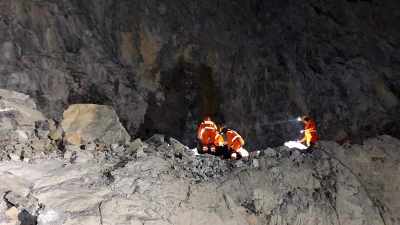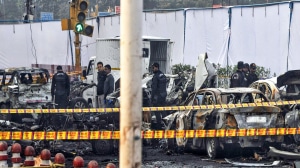82% embankments in Assam have outlived their utility
The monsoon,which begins in June,could last up to late October.
Ahead of the inevitable floods in Assam,the water resources department has found that over 82 per cent of the states embankments and and dykes have already crossed the lifespan for which they are effective. The monsoon,which begins in June,could last up to late October.
Assam has 4,774 km of embankments and dykes constructed along the Brahmaputra and its tributaries. The 2012 monsoon saw embankments breached at 74 places,leaving over 180 people dead,affecting over 30 lakh and damaging crops over 3.28 lakh hectares.
The Brahmaputra had caused breaches at 14 places,while breaches by tributaries such as Subansiri,Kopili,Pagladiya,Buridehing and Puthimari submerged hundreds of villages. In Sonitpur,Barpeta and Dhemaji districts,where breaches are estimated at nearly 5 km long,repairs are not yet complete.
The floods last year breached embankments at 74 places,and it is a fact that 3918.82 km of a total 4773.82 km of embankments have surpassed their effective life-span, admitted Water Resources Minister Rajib Lochan Pegu who represents Majuli,the river island that has been at the mercy of the Brahmaputras fury for over 100 years.
Yet,Pegu said,these embankments are still in operative condition because of periodic maintenance. A comprehensive scheme of Rs 4031.41 crore has been submitted to the Brahmaputra Board to strengthen the embankments, Pegu said,as the government looks forward to New Delhi to clear those proposals.
In his 2013-14 budget,Chief Minister Tarun Gogoi announced allocation of Rs 600 crore this year for strengthening of embankments that are more than 30 years old and had surpassed their effective life-span.
Among the embankments that have outlived their effective span,the state government recently identified 950 km as extremely vulnerable and 2,390 km as vulnerable. The Brahmaputra took a couple of hours last September to wipe away embankments 1.8 km long at Solmari in Sonitpur district; the reason the government cited was that the embankment had slumped down. Such slumping also took place in Majuli,Sivasagar,Nagaon and Morigaon districts last year.
The water resources department raised and strengthened embankments across 528 km during the 11th plan period. Proposals have been made for raising and strengthening over 500 km in the 12th plan.
Floods have remained perpetual bane of Assam. The Brahmaputra,the fourth largest river in the world in terms of annual discharge,reaches a level of 100,000 cubic metres per second during floods. Aggradations of the riverbed,intense braiding and heavy sediment load are the main factors responsible for extremely unstable rivers in Assam, the chief minister said in a presentation in the last National Development Council meeting in December 2012.
Gogoi has been pleading with the Centre to address Assams floods as a national problem,but not all are impressed at home. The Centre had agreed to accept floods in Assam as a national problem back on May 5,2005,during a tripartite meeting presided by Prime Minister Manmohan Singh. But that declaration has remained only on paper, said Samujjal Bhattacharyya,adviser in the student union AASU.
The AASU last weekend came out with photographs of unrepaired embankments at 44 places and asked whether the government would repair those before the rains begin. Merely telling the assembly that 82 per cent of the embankments had surpassed their life-span is not enough. Does the government have a time-bound action plan or will it wait for the next monsoon to cause yet another round of misery? Bhattacharyya said.
We have set a target of April 30 for complete repair of 63 of the 74 breaches caused last year,and we hope to complete the works well within that deadline, said minister Pegu.






- 01
- 02
- 03
- 04
- 05

























